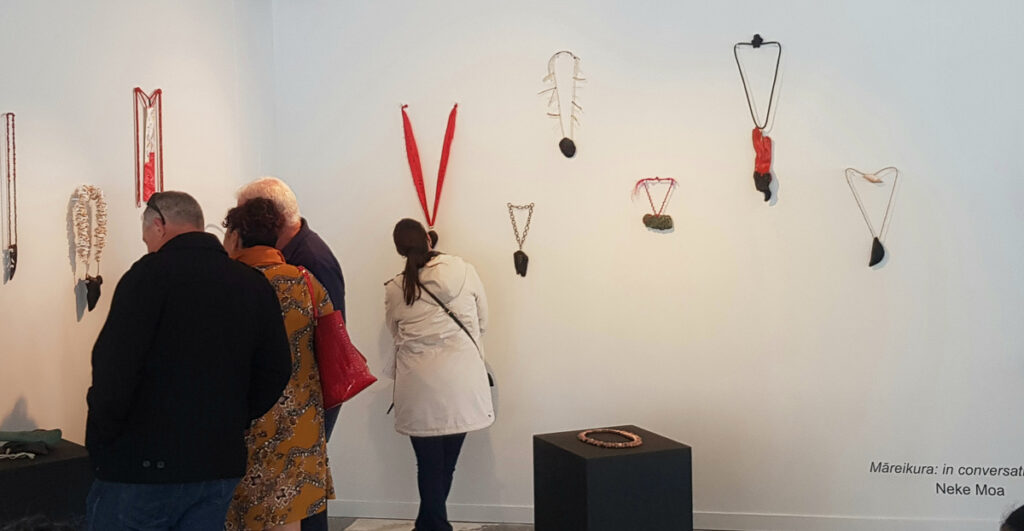
Neke Moa, adornment and object artist, describes how she explored the role and importance of wāhine (women) in the spiritual and physical world for her latest solo exhibition.
“Me aro ki te hā o Hineahuone”
“Pay heed to the dignity of Māori women”
This whakataukī, or proverbial saying, captures the essence of my latest exhibition: Māreikura: in Conversation at Masterworks Gallery, Auckland, Aotearoa in October 2020.
Māreikura are an order of supernatural beings (or goddesses) in Māori mythology. The process of making the work was a collaboration between the found materials I used and my interpretation of the stories of māreikura.
Twelve goddesses were called into life, each with their own distinctive personality, voice and story (see below). Collectively, they connect our past to the everyday present and manifest in each of us.
“We who dwell in the spaces between, the realms in the corner of an eye, embodied and connected by fire, wind, water and earth. We are harbingers of change and growth, guardians and caretakers. We are Women, our stories are woven in the fabric of space and time.”
(Māreikura in Conversation exhibition e-catalogue)
Hinetuahoanga
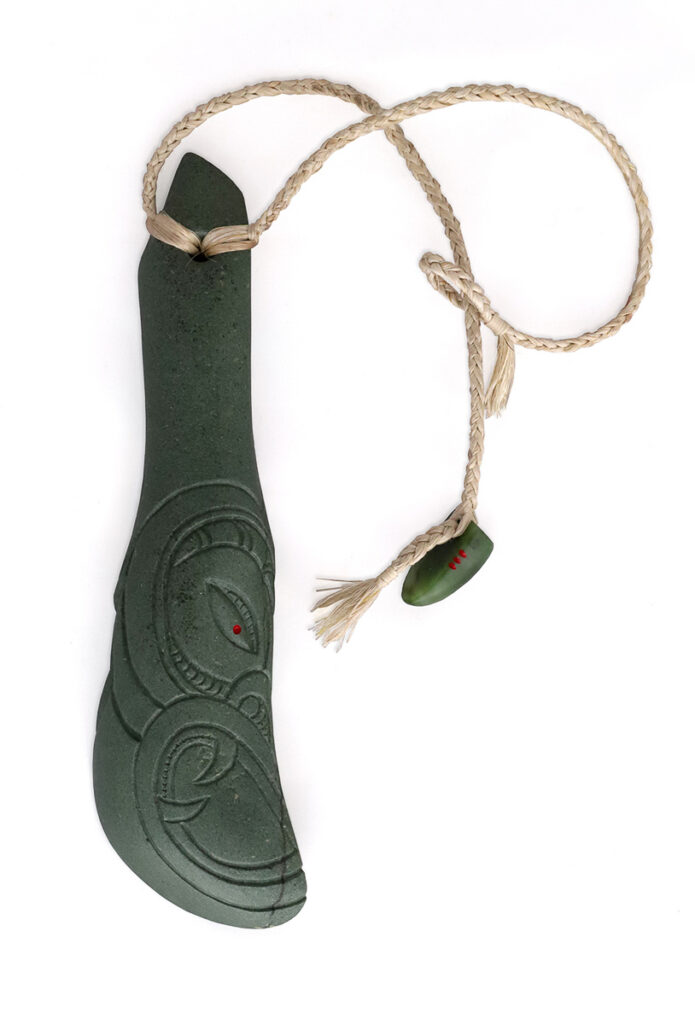
Hinetuahoanga is the sandstone, she is the material that shapes and fashions pounamu into taonga. Overcoming other quarried stone during her journey across Aotearoa, she established a geological map ranging from Tūhua in the north to Te Tai a Poutini in the south.
Materials: Pounamu, Hoanga (sandstone), muka, paint, wood
Te Hākui
Kuia (female elder) are the whare matauranga (repositories of knowledge) within whānau, linking the past with the present. They are the guardians of the maintenance and transference of history and knowledge for future generations.
Materials: Pounamu, paint, copper, driftwood.
Hinemoana

Hinemoana is an atua (ancestor/goddess) of the oceans, her children are the creatures of the sea. Even though she can be calm, Hinemoana is increasingly rising up.
Materials: Pounamu, muka, paint
Hina
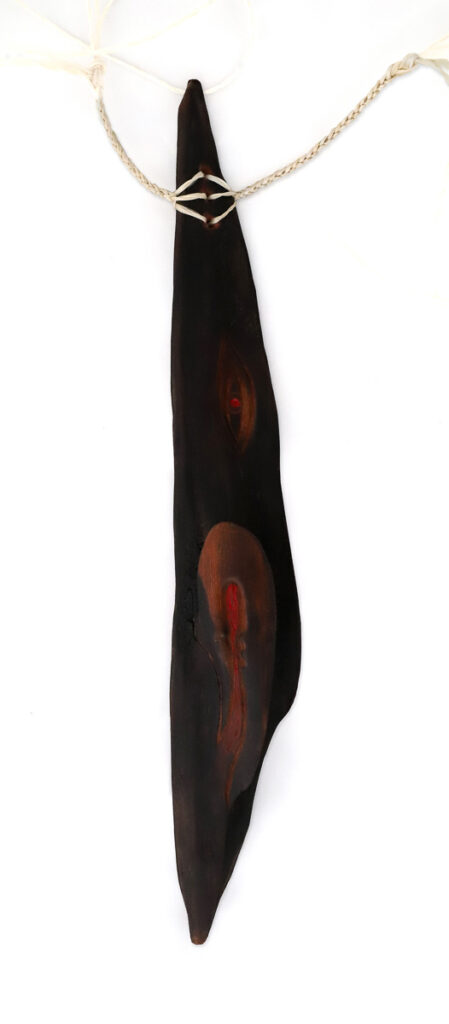
Throughout the Pacific, the moon goddess is known as Hina—the ruler of tidal waters and the timekeeper of the seasons. She is seen as a constant rhythm of life and death—creation and destruction.
Materials: Driftwood, muka, bone, paint.
Hine-tītama
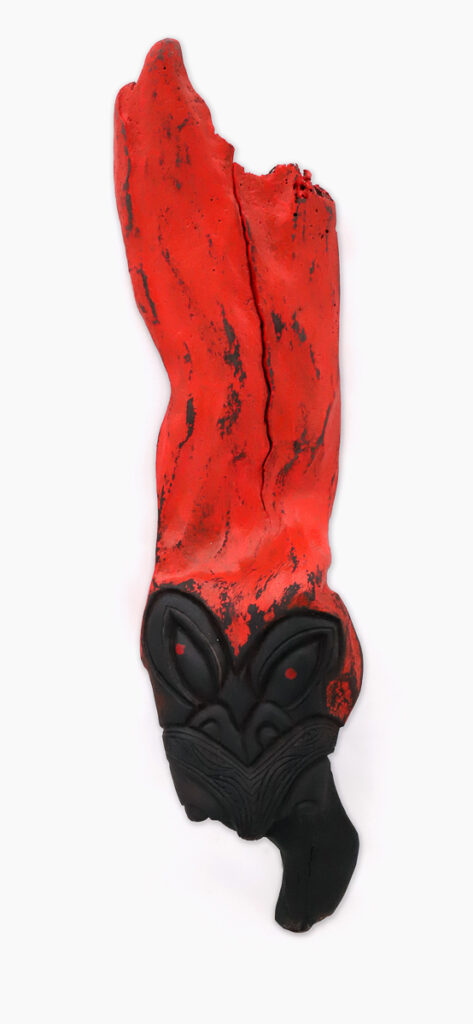
She is the daughter of Hine-ahu-one, who was formed from the earth. Hine-tītama is represented here in her transition to being Hine-nui-te-Po as she moves from the world of light into the realm of darkness. She awaits there with love, the souls of her children in the upper world as they pass through the veil of life into death.
Materials: Driftwood, paint, brass, cord
Takurua
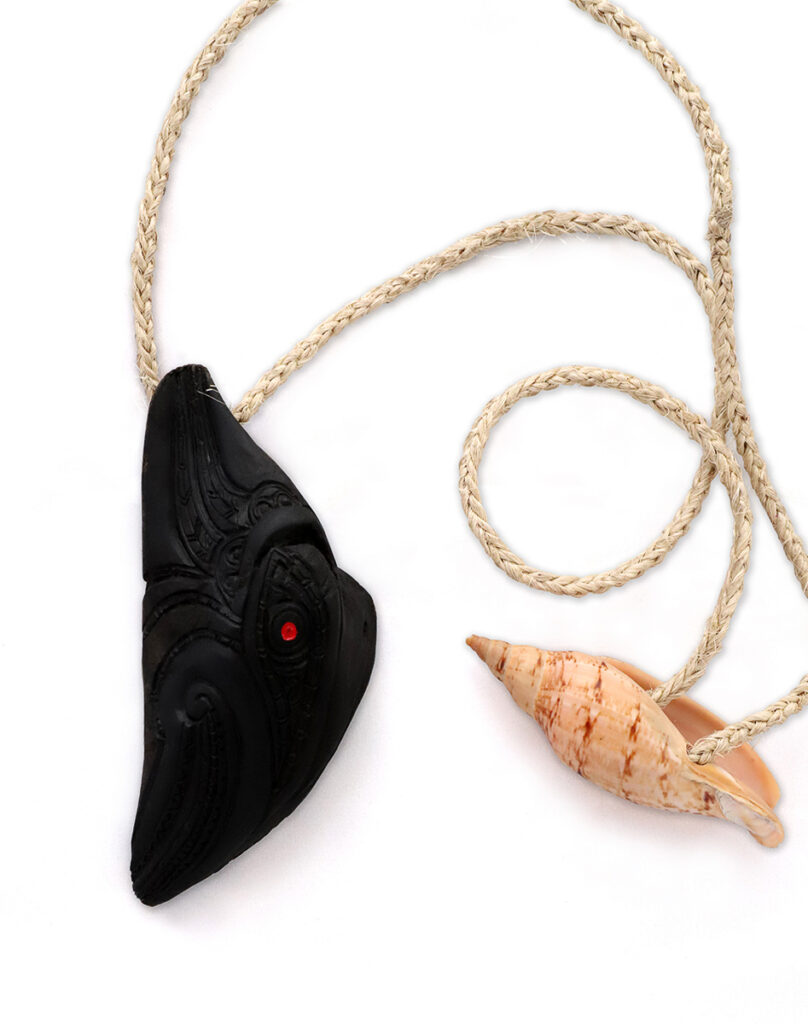
Takurua is the Dog Star (Sirius), one of the brightest stars in the sky and found in Kāhui Takurua (Canis Major). Takurua is also associated with winter. She reminds us of our loyal and loving dogs that bring light and joy into our lives.
Materials: shell, driftwood, twine, paint
Awhinui
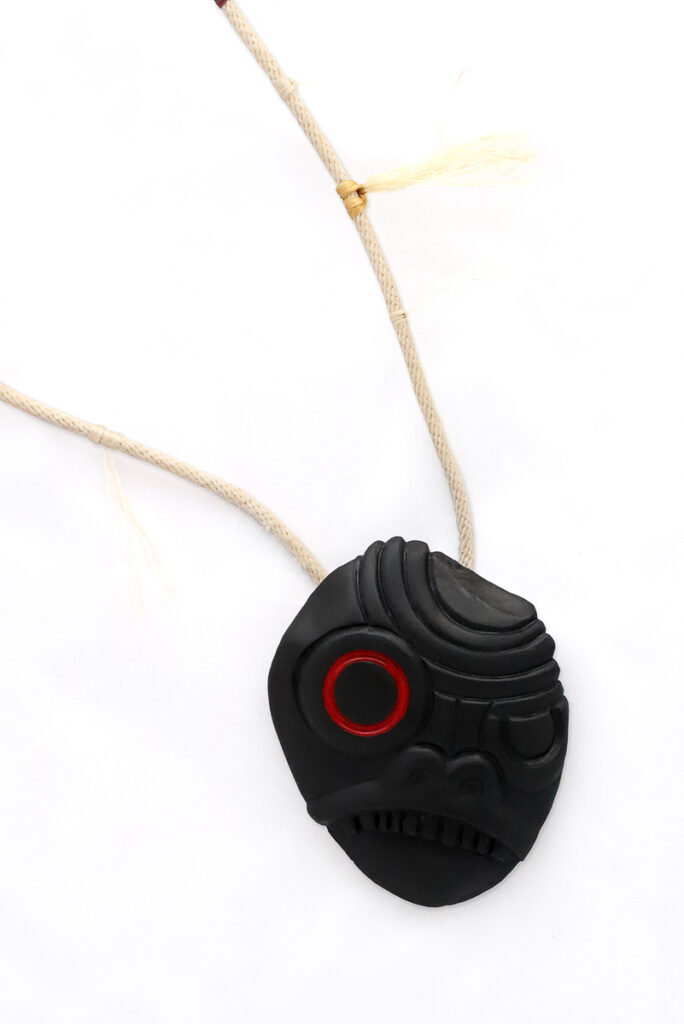
Awhinui symbolises Māori women who remain open-hearted, embracing all and giving unconditional love and support despite all her hard times. She is made from ōnewa, the base rock of Aotearoa. She is the foundation stone.
Materials: Onewa, paint, cord, muka.
Kuīni
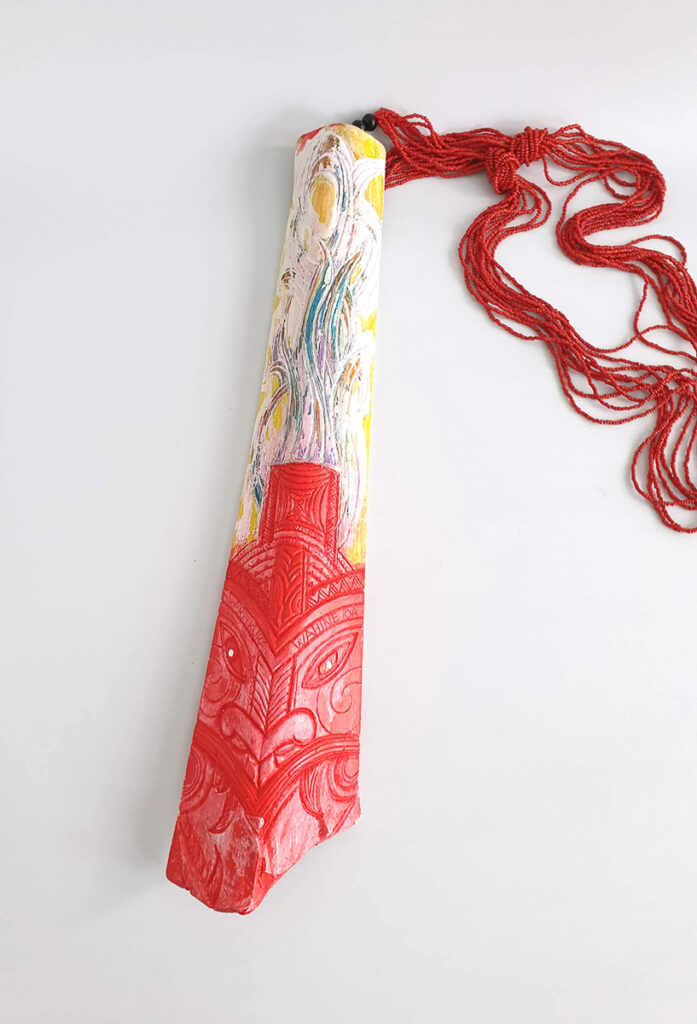
Kuīni is the queen of the Tūrehu, supernatural beings or ‘fairy folk’. Tūrehu take on many forms and in this form Kuīni is representing and celebrating takatāpui (LGBTQI+ people).
Materials: found pvc, cord, paint
Whare
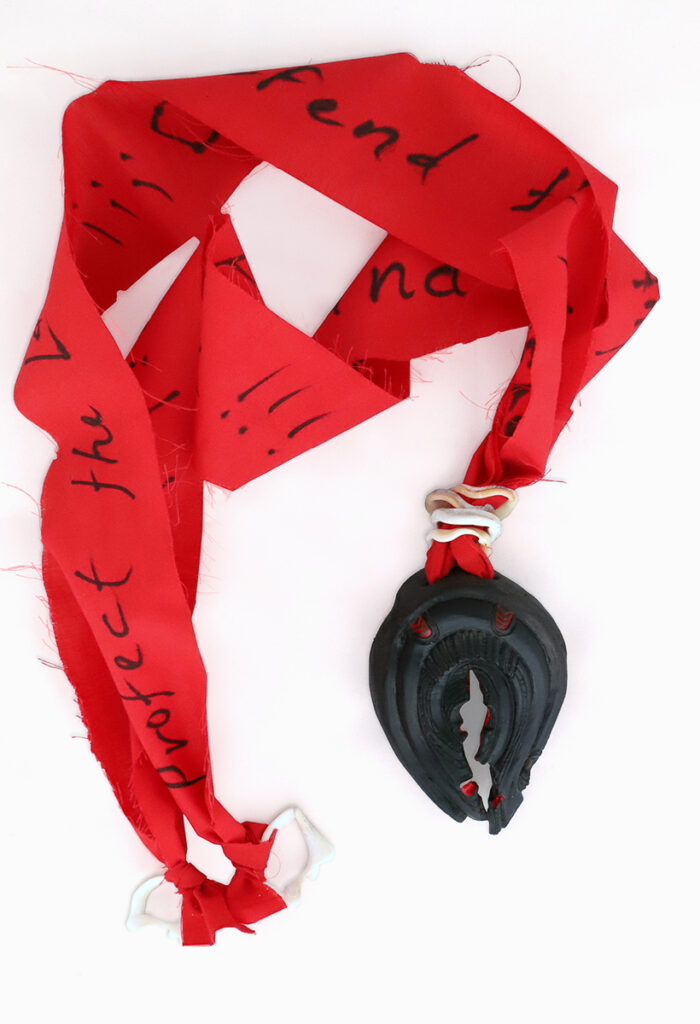
Whare represents the whare tangata (house of humanity, womb, uterus). She is a symbol of our bleeding, and our ability to create.
Materials: Driftwood, shell, fabric, paint
Nesian
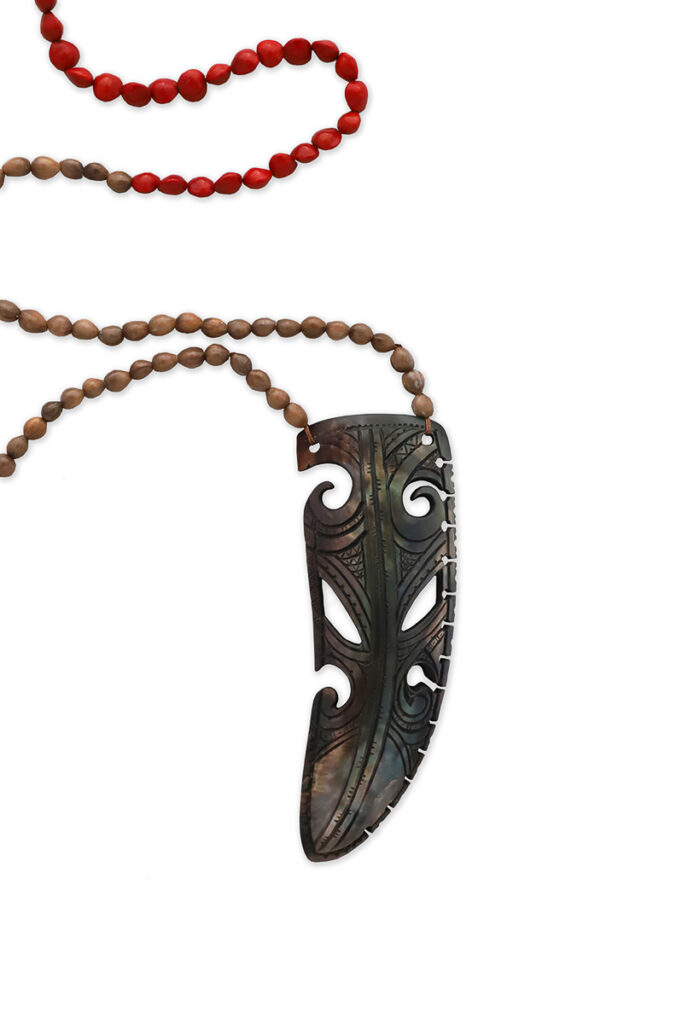
Nesian represents all women from Te Moana-nui-a-Kiwa (Pacific Ocean region) including Polynesians, Micronesians and Melanesians. She is a symbol for our diversity and our connections, and most importantly our relationships (and whakapapa) to each other.
Materials: Ufi (shell), seeds, cord
Āio
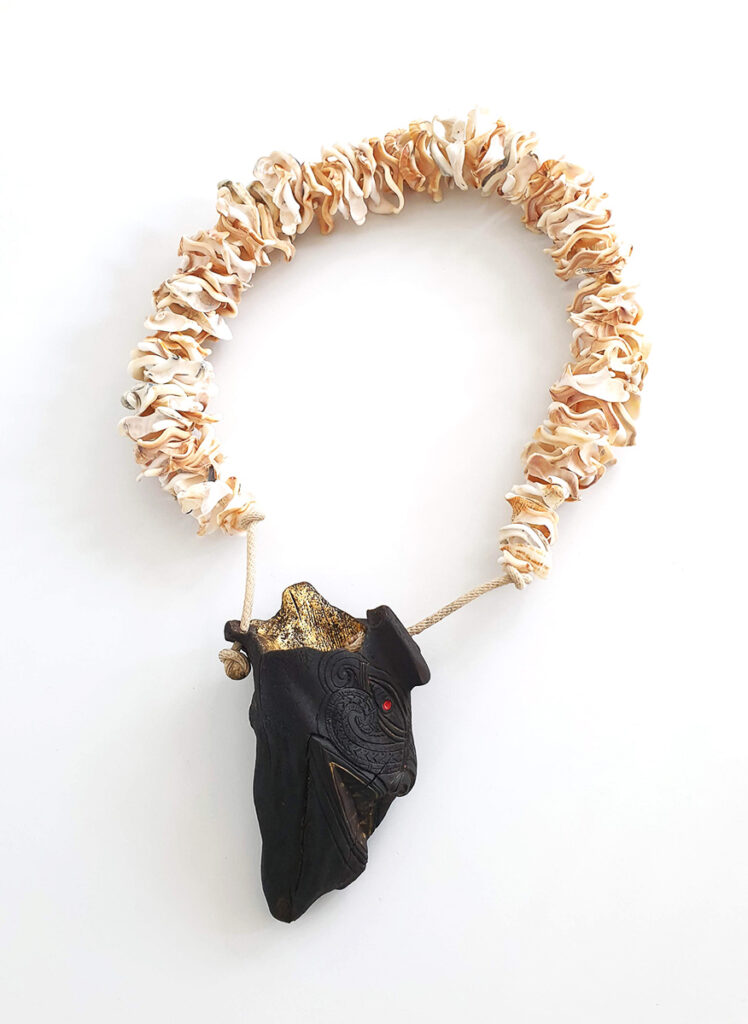
Āio is a healer who holds rongoā (remedies, treatments, medicines) in her golden chalice. Her rongoā is a renewable energy that she sources from the divine (wāhi ngaro).
Materials: shell, driftwood, gold leaf, cord, paint
Kotahitanga
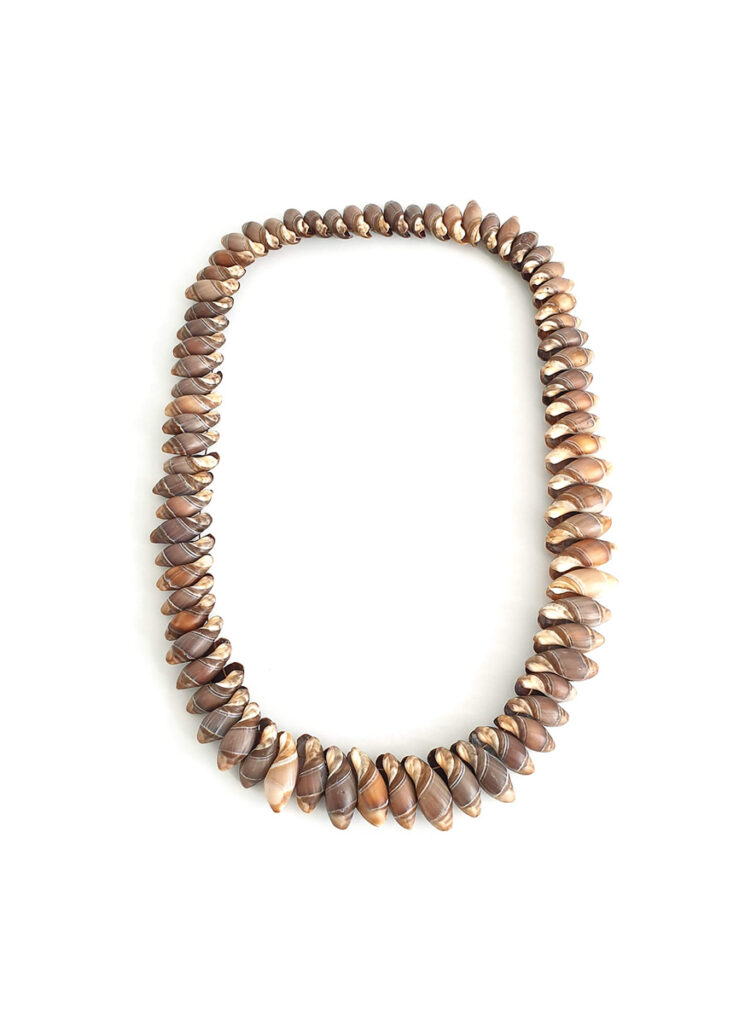
Kotahitanga symbolises our collective consciousness and collective action. She inspires and exemplifies our activism through unity, togetherness and solidarity.
Materials: shell, cord
The exhibition at Masterworks Gallery resulted in most of the māreikura beginning a new journey in new homes and new mauri (life force). This project has been a massive collaboration sharing many conversations with many wāhine. To all those goddesses who inspired, invigorated, created and featured in this process, I have so much love and gratitude for you all. He kōrero, he kōrero, he kōrero!
Next up is a collaboration project with Suzanne Tamaki and invited wāhine to activate the māreikura through digital augmentation and audio. This project will result in a video installation for an online platform and/or gallery space.
Nga mihinui!
Click here for the e-catalogue for Neke’s exhibition.
Artist
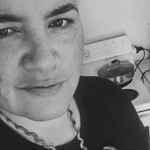 I live at Otaki Beach, Aotearoa, where I have a studio/home and a rich resource of materials, people and inspiration. I am an adornment and object maker, being tangata whenua (indigenous) informs and leads my art practice. I mainly exhibit and make commission works, teach and currently work part-time at Toi Matarau gallery at Maoriland Hub in Otaki.
I live at Otaki Beach, Aotearoa, where I have a studio/home and a rich resource of materials, people and inspiration. I am an adornment and object maker, being tangata whenua (indigenous) informs and leads my art practice. I mainly exhibit and make commission works, teach and currently work part-time at Toi Matarau gallery at Maoriland Hub in Otaki.
Mauri ora!


Comments
incredible mahi!!